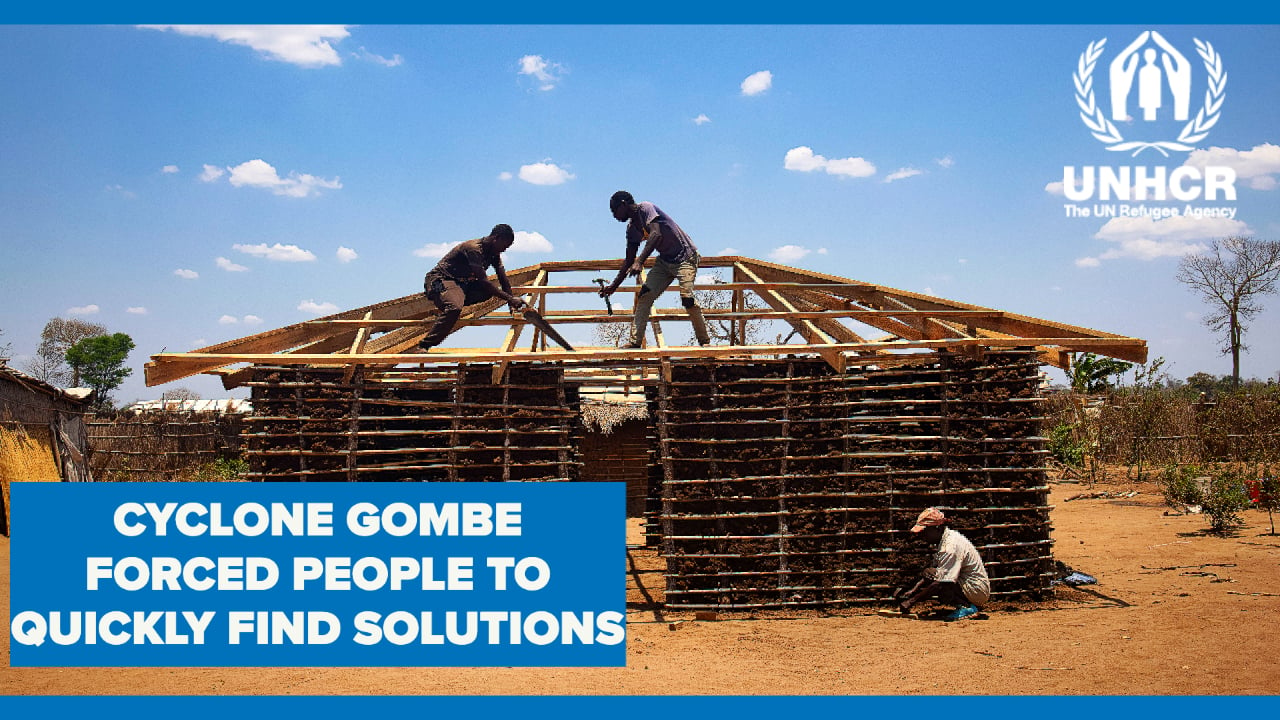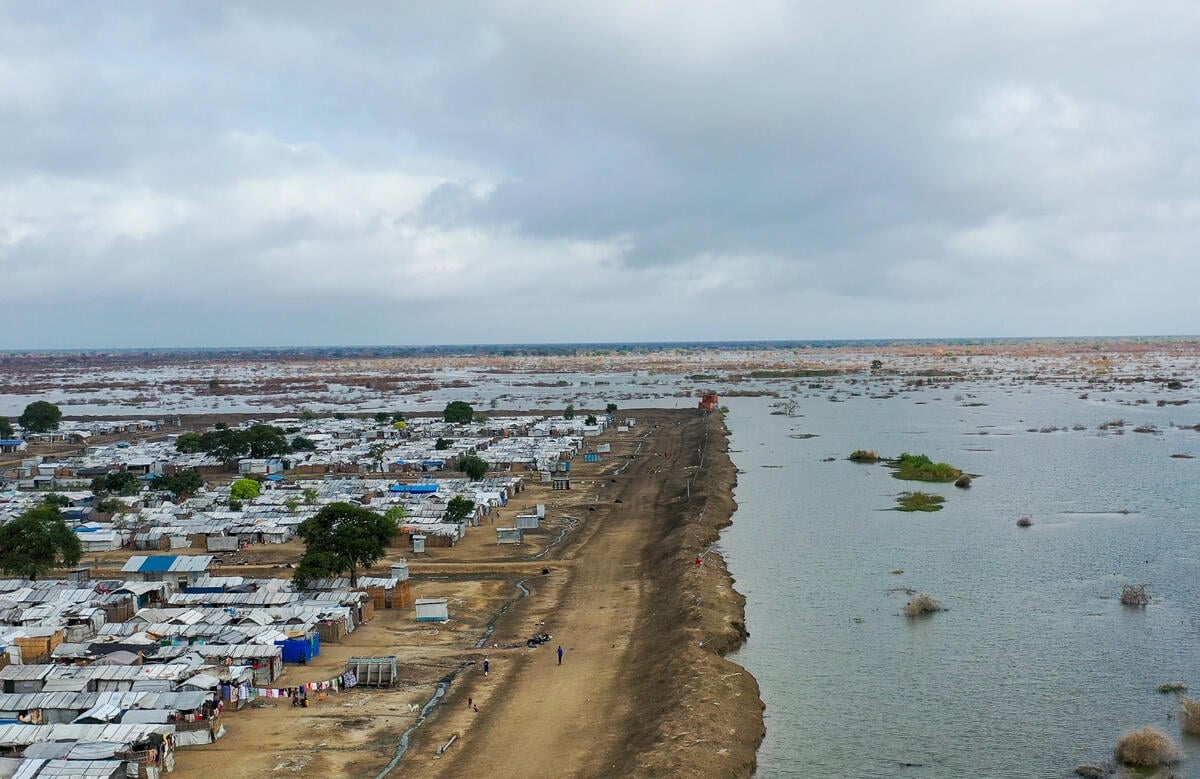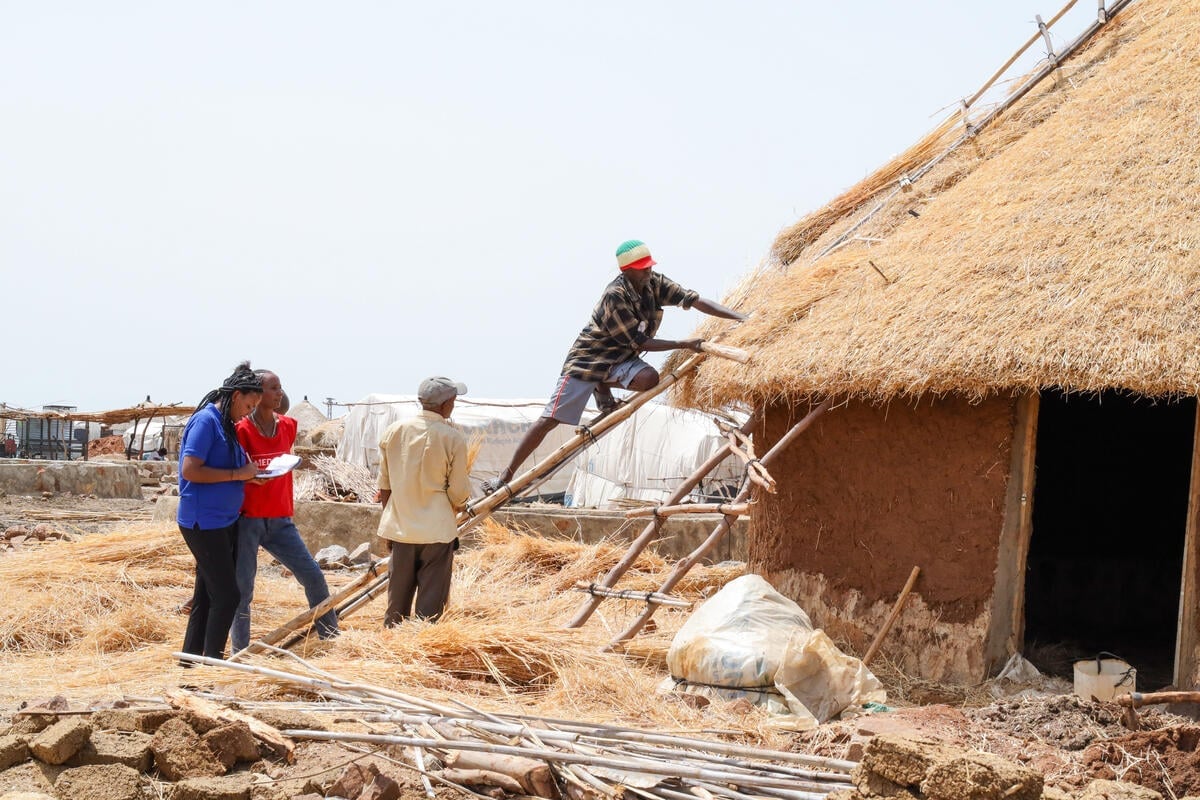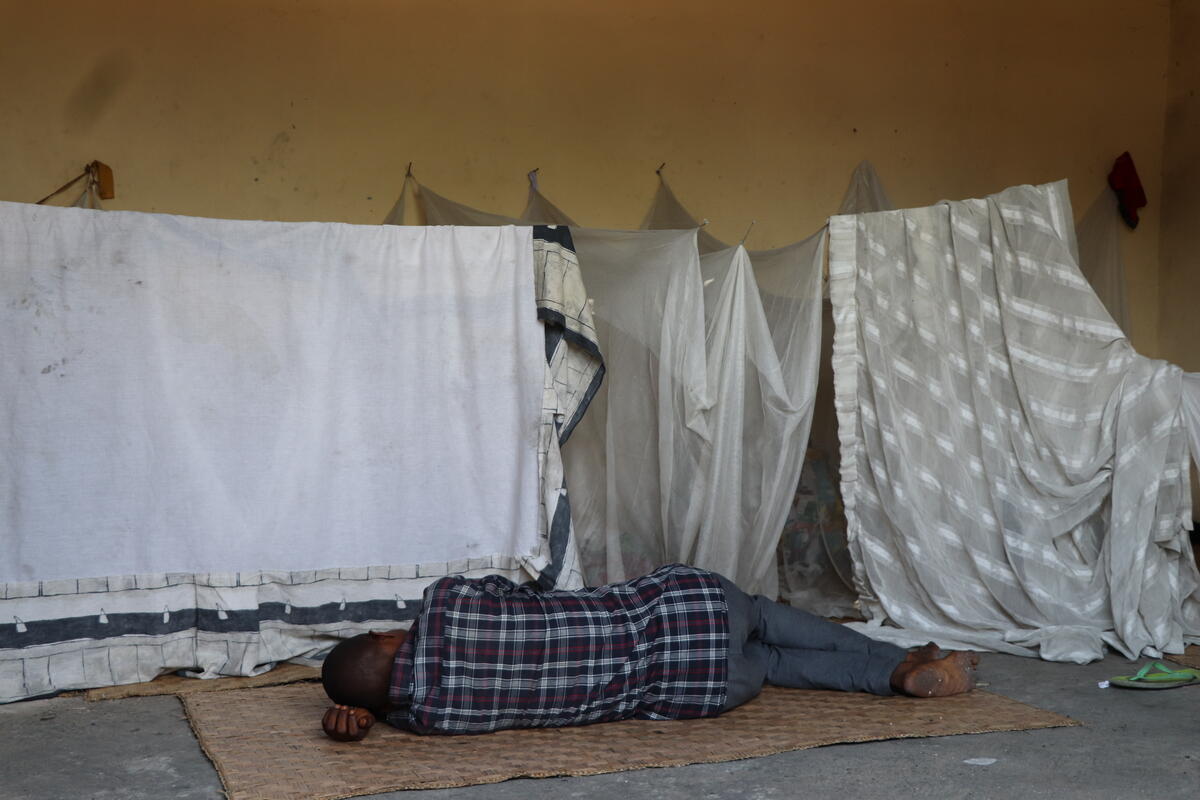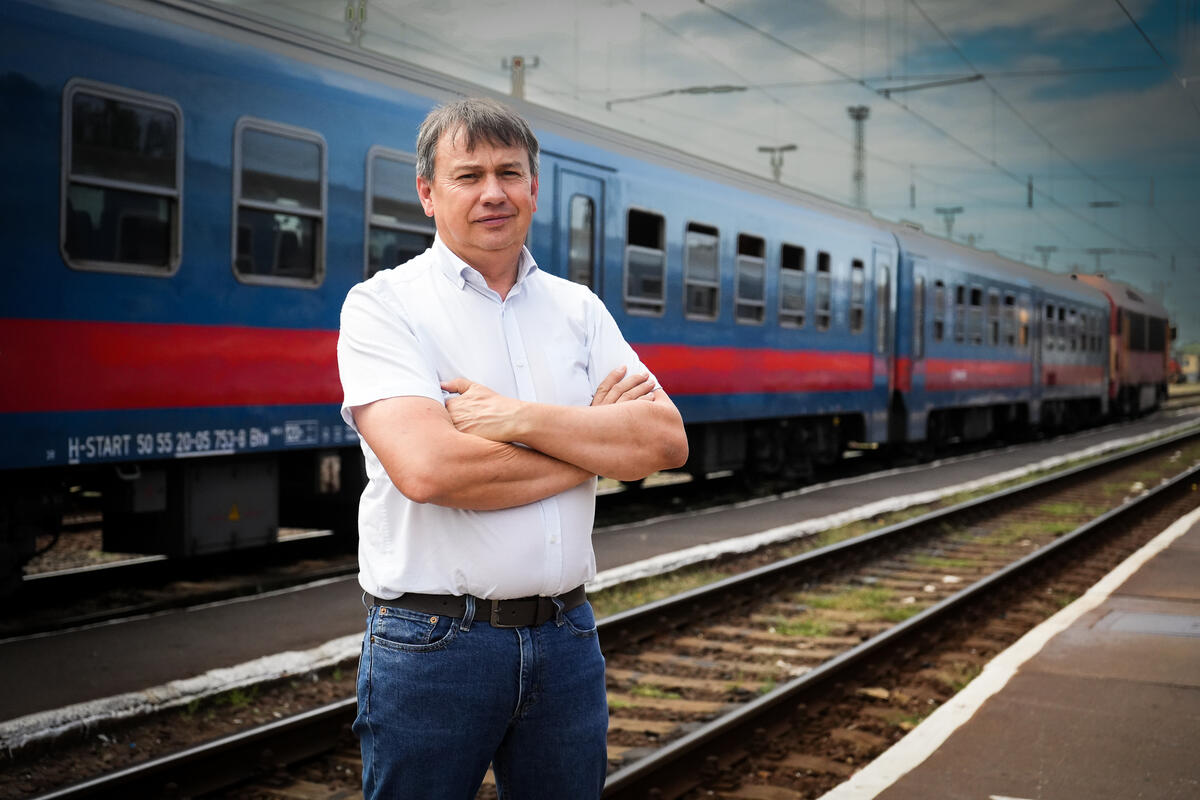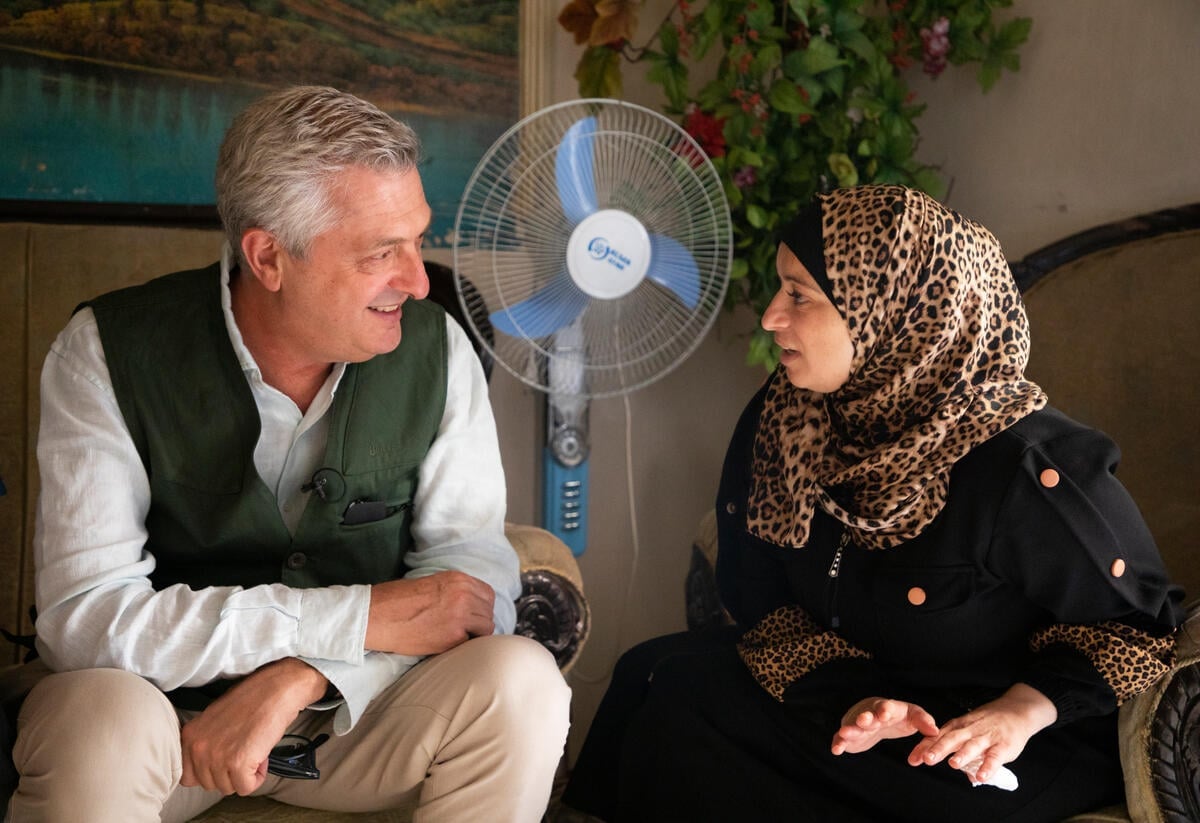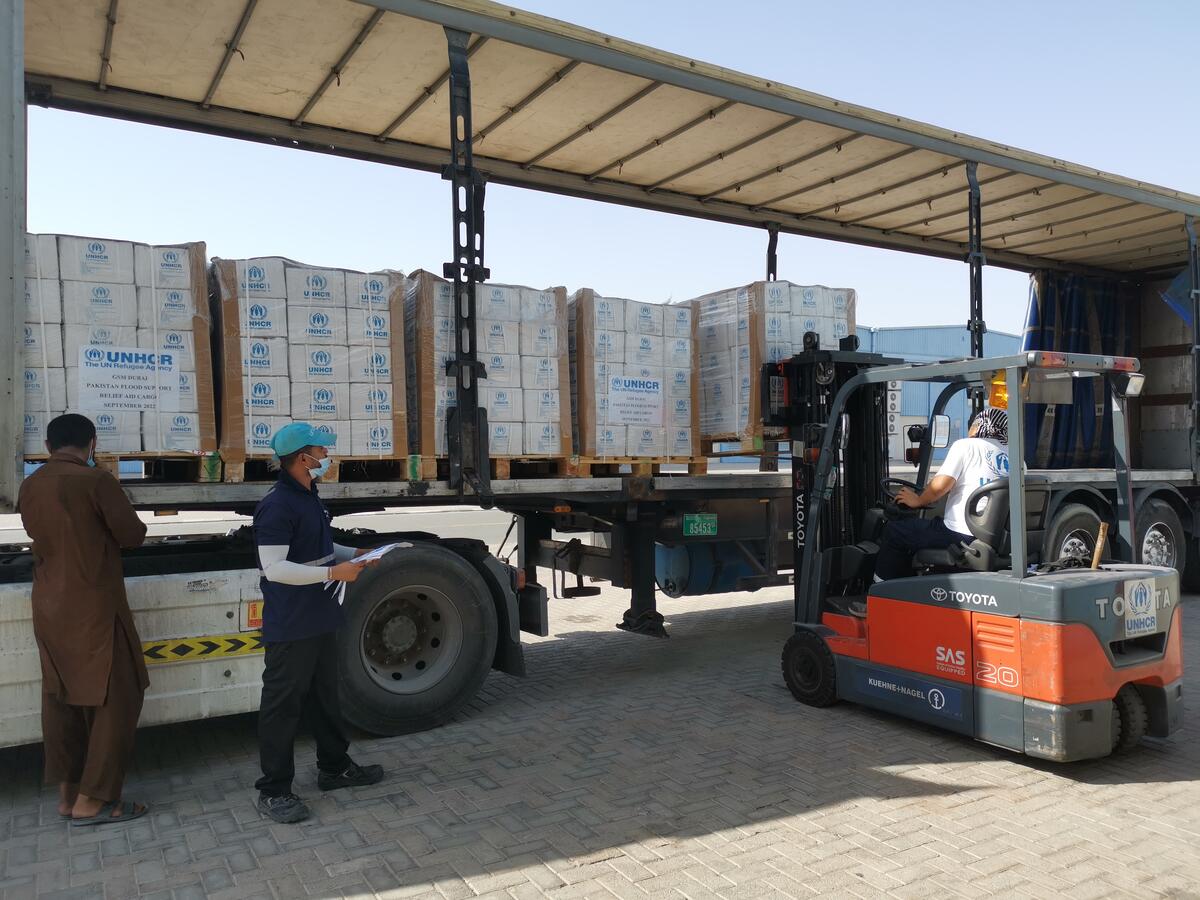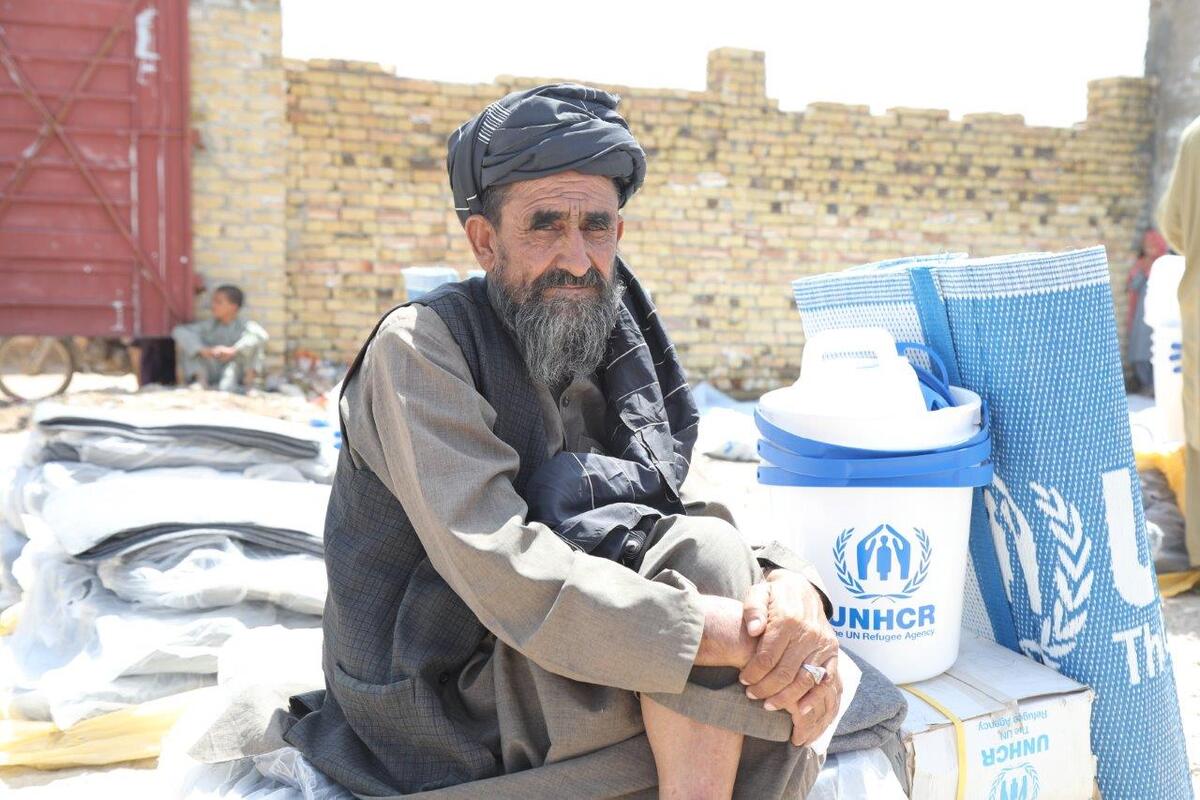For displaced Yemenis, 'eco huts' provide shelter from the elements
For displaced Yemenis, 'eco huts' provide shelter from the elements

ABS, Yemen – Uprooted by war in Yemen, Mohammed Ali and his family found themselves stranded out under the elements.
“When the first rains would pour … we had no plastic sheeting or anything. I swear to God that I used to hug my children and my wife and I would cry,” Mohammed recalls.
Since conflict erupted in Yemen in 2015, more than three million people have been driven from their homes, with more than two million of those still displaced within the country.
The northwestern costal governorate of Hajjah is home to around a fifth of all displaced Yeminis, with most originating from other areas within the governorate. It has the highest percentage of displaced families living in pre-existing urban and rural settlements, creating a need for additional shelters.
To accomodate some of the most vulnerable, UNHCR, the UN Refugee Agency, is building 4,700 so-called “eco huts” in Abs, a town on the coastal plain in Hajjah Governorate.
The shelters are designed and built with the help of displaced Yemenis using traditional construction methods and materials.
“UNHCR has chosen this type of shelter because (it) is the best shelter, suitable with the environment of Abs,” says Faiz Harmal, an engineer with UNHCR.
The huts are made from mud, dung and grass. As well as keeping out the rain, the materials insulate against extreme heat and dust driven by the wind.
“You can control the ventilation which means in summer you can open the windows and close it in winter when it is cold,” says Mohammed, who is now out of the rain. “Praise be to God, today after we got the shelters, we forgot about our past suffering.”
The huts also have other advantages. Omead Aiyoub, a UNHCR field officer in Yemen, says that the housing is “transitional,” meaning that when displaced residents can return to their communities, they can take it with them.
“The materials can be re-used again. It gives them a kind of recovery. They will not start from zero, from scratch. They can have something in their hands when they rebuild their homes upon return.”



